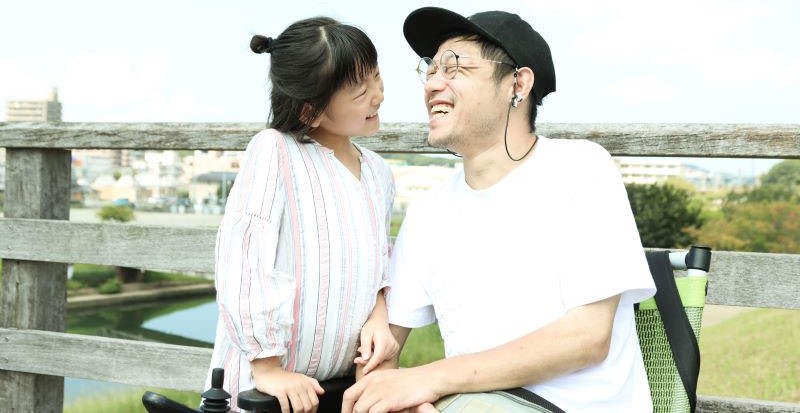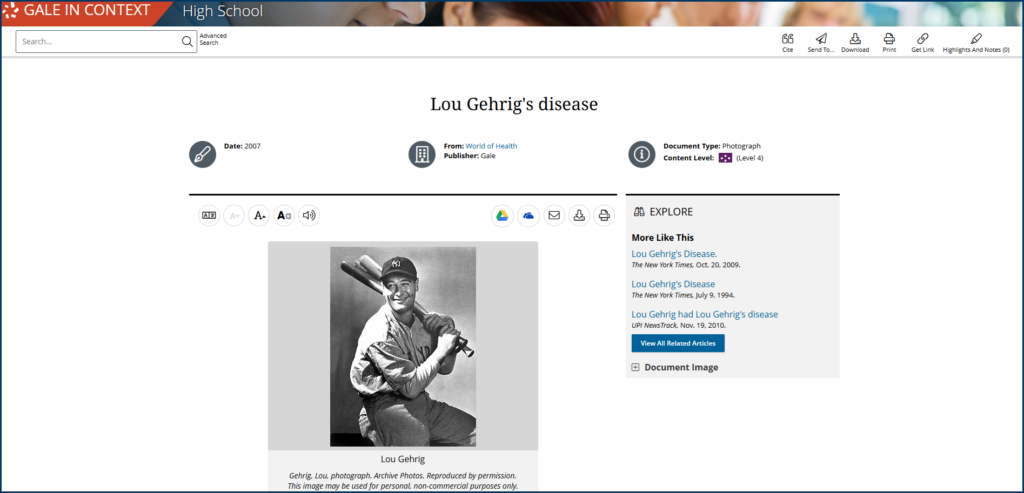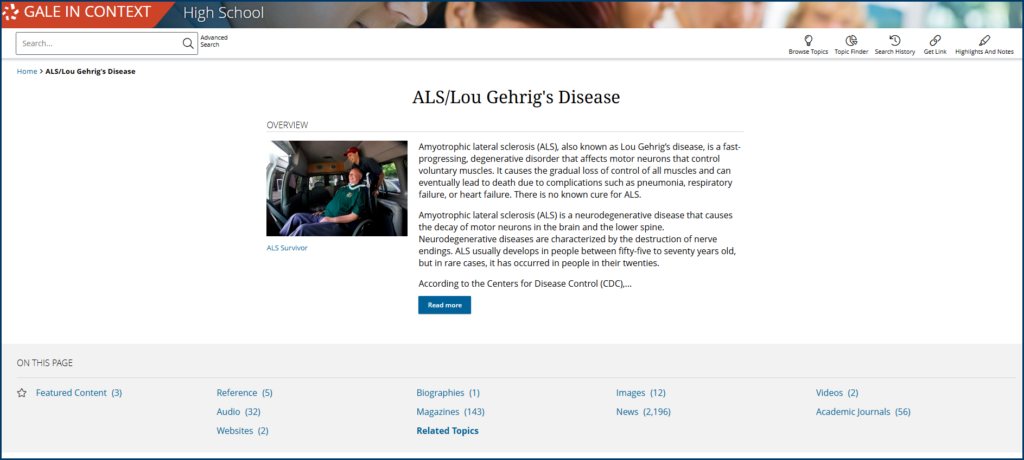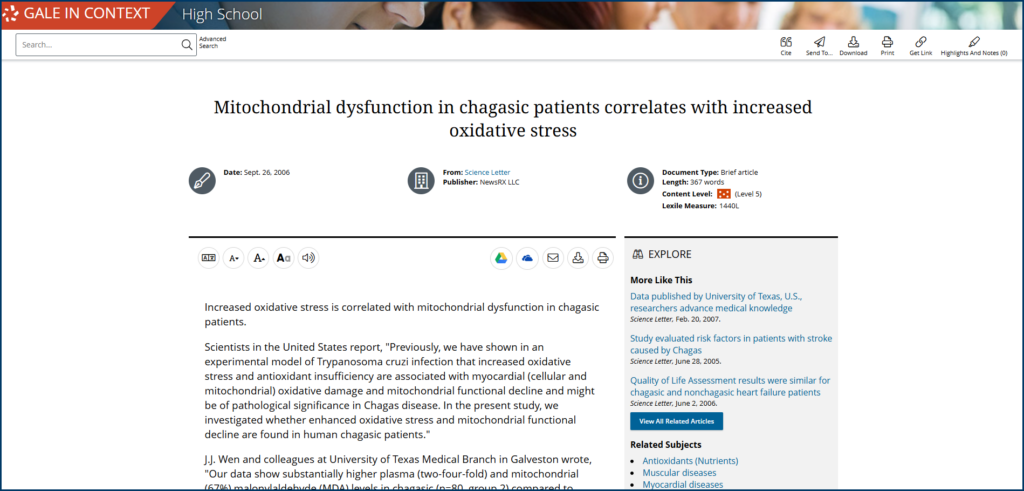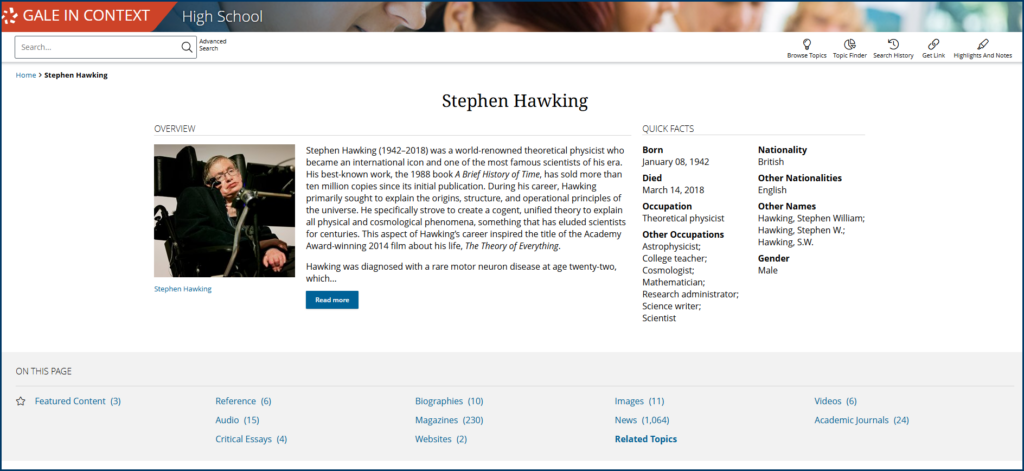| By Gale Staff |
“I consider myself the luckiest man on the face of the earth.”
When Lou Gehrig spoke those words in front of a packed Yankee Stadium in 1939, he was announcing the end of his baseball career. He hadn’t missed a game in more than 13 years and had made more than 2,130 consecutive on-field appearances, earning the nickname “The Iron Horse” for his unwavering dedication to the sport he loved.
At first, there was no clear explanation for why the first baseman was leaving the Yankees. In fact, Gehrig didn’t know what was happening—only that he no longer had the strength to play. It wasn’t until weeks later that he traveled to the Mayo Clinic in Minnesota and received a diagnosis of amyotrophic lateral sclerosis (ALS). This rare, little-understood neurological disorder would come to bear Gehrig’s name.
At first, he kept his condition quiet, but that changed on July 4, 1939, when the Yankees organized a tribute in front of a crowd of teammates, fans, reporters, and even former opponents. Gehrig stood before them—visibly thinner, slower to move—and gave a short, impromptu speech.
He never mentioned the name of his illness, but he demonstrated, once again, why he was considered one of the most resilient, dedicated men in baseball. “I may have had a tough break,” he said, “but I have an awful lot to live for.”
He would live for two more years, during which ALS would claim his ability to walk unaided, to speak clearly, and eventually to breathe on his own. Gehrig died on June 2, 1941. He was 37 years old.
Gehrig’s story still resonates because it touches the human reality behind a clinical diagnosis. For students, it provides an entry point into medicine as a topic that demands both empathy and intellectual engagement.
The newly-updated ALS topic page in Gale In Context: High School supports an emotionally intelligent approach to learning with a curated collection of primary sources, biographies, periodicals, and critical essays from leading medical publications. These are paired with multimedia features, including videos, audio, and images, that help students of all learning styles connect with the disease—and its human impact.
What Is ALS?
Amyotrophic lateral sclerosis (ALS) is a progressive neurological disease targeting the nerve cells—motor neurons—in the brain and spinal cord that communicate with one another to control voluntary muscle movements. As these motor neurons degenerate, they lose the ability to read signals from the brain.
As with many medical conditions, we can understand a lot about what ALS is just by evaluating its name.
In the word “amyotrophic”:
- The prefix a- means “no” or “without.”
- Myo- refers to muscle, as in “myocardium,” the muscles of the heart, and “myocyte,” meaning “muscle cell.”
- Trophic is a root wood for “nourishment,” like when referring to a particular organism’s trophic level or place in the food web.
Together, amyotrophic means “no muscle nourishment,” alluding to the fact that the muscles are no longer “nourished” by the nerves that connect to them and begin to waste away.
An Ongoing Investigation: What Causes ALS?
There are two known forms of ALS: inherited, which is passed down through families, and non-inherited, which seems to develop without a genetic cause. Scientists are studying both to understand what leads to the death of motor neurons.
In cases passed down through families, scientists have identified several genetic mutations that appear to trigger the death of motor neurons. Of particular interest is SOD1, a protein that normally helps break down harmful byproducts in cells. Mutated SOD1 can create a toxic version of itself, which builds up inside motor neurons and damages them from within. Researchers are now developing antisense or “gene silencing” therapies that can block the faulty gene from creating the harmful version in the first place.
Approximately 90% of ALS cases aren’t inherited. In such cases, many scientists believe the disease may be caused by how the body handles waste at the cellular level. In healthy neurons, the proteasome system identifies and breaks down damaged or misfolded proteins before they can cause harm. In a patient with ALS, it seems that the system doesn’t work the way it should. This allows damaged proteins to clump together and cause worsening inflammation, leading to neural damage.
Research at the Tipping Point
Now that scientists have a better grasp of how ALS affects cells, they’re exploring new ways to interrupt the disease’s progress, starting with the mitochondria.
When in a healthy state, mitochondria function as the organelle responsible for converting nutrients into usable energy. Once damaged, however, they release toxic molecules that cause cell deterioration. When healthy cells detect those toxic molecules, they use mitophagy to find and remove dysfunctional mitochondria before they cause harm. One study from the team at Hollings Cancer Center found that restoring mitophagy in mice with ALS-like symptoms led to improved coordination and muscle strength.
In 2023, researchers at Nagoya University in Japan looked at two proteins that help maintain mitochondrial function: sigma-1 receptor and ATAD3A proteins. When these proteins aren’t working correctly, they can cause mitochondrial damage and nerve cell deterioration seen in ALS. When scientists reactivated the sigma-1 receptor in mice, their symptoms improved, a discovery that can fuel further advancements in treatment options.
Research Activity: A Multi-Pronged Approach to ALS Care
As motor neurons fail, the body gradually loses its ability to do things most people never think twice about: walking across a room, eating a meal, holding a conversation, or even taking a breath.
In this activity, students use Gale In Context: High School to research one area of ALS care—communication, mobility, and respiratory support—from problem to solution.
Communication
ALS affects the muscles used for speech, called bulbar muscles, which can make verbalizations drop in volume or become slurred. Eventually, some people lose the ability to speak entirely, even when their cognitive abilities remain intact.
Because speech difficulties appear early for many ALS patients, speech therapists help patients capture their natural voice through a technique called “voice banking.” This involves recording their speech in advance so that when speaking directly is no longer possible, they can still communicate authentically in a voice that feels like their own.
As ALS progresses, even typing or tapping become challenging due to weakened muscles in the hands and fingers. In these advanced stages, adaptive tools—such as eye-tracking devices that follow subtle eye movements or muscle sensors sensitive enough to detect tiny twitches—allow patients to select words on a screen.
The goal is always to keep communication as personal and expressive as possible while tailoring the technological setup to the person’s abilities. Physicist Stephen Hawking, who also lived with ALS, operated his synthetic speech generator by twitching a single muscle in his cheek. When that muscle moved, a glasses-mounted infrared sensor detected the movement, allowing him to select characters on a computer screen, which the speech generator then spoke aloud.
Research prompt: Ask students to look deeper into speech technology, considering how it works and how it can capture genuine human emotion. What features might help someone feel their communication device truly represents them? How could having a more expressive device help protect someone’s sense of identity and independence when living with ALS?
Mobility
When someone loses their ability to move freely, it means surrendering everyday freedoms like standing up without assistance, or safely enjoying the privacy of their own home. Even routine movements become risky; a sudden muscle weakness can lead to a fall, injury, and anxiety about basic activities.
Occupational and physical therapists help patients adapt their routines and environments before accidents happen. In addition to helping those with ALS keep their muscles as strong as possible for as long as possible, specialists can also teach their clients safer ways to navigate their surroundings independently.
They can also help match patients to the appropriate mobility tools, whether motorized wheelchairs, lift systems, or adaptive utensils. Therapists, caregivers, and patients must consider balancing performance with practicality. If a wheelchair is too bulky to navigate a hallway, or a doorway isn’t wide enough to accommodate it, the tool becomes a barrier instead of a bridge. The best mobility aids restore function and let people continue living in the spaces they already know and love.
Research prompt: Invite students to choose a room in their home or school and evaluate how someone with ALS might experience that space differently. What features would be difficult to navigate? What small changes could make the room more accessible without feeling clinical or impersonal?
Respiratory Support
One of the most dangerous aspects of ALS is the eventual paralysis of the muscles controlling the diaphragm, causing shallow breathing. Because patients lose the ability to inhale or exhale fully, they can develop dangerous levels of carbon dioxide buildup and face an increased risk of respiratory failure.
To stay ahead of these changes, many patients work with respiratory therapists to begin using inhalation tools. One example is a non-invasive ventilator that reduces strain on the diaphragm muscles while the person sleeps. They may also opt for a diaphragm pacing system to deliver direct electrical stimulation to these muscles, replacing signals no longer arriving from the brain.
Once ventilators are no longer enough, some patients consider tracheostomy ventilation, which involves surgically placing a tube into the windpipe.
Research prompt: Ask students to evaluate two real ALS respiratory care options using Gale In Context: High School. They can start on the ALS topic page by using the “Search Within Results” tool to look up general terms like breathing, respiratory care, or ventilation.
From there, learners can use the main search bar to dig into more detail about specific respiration therapies and clarify key concepts, like how the respiratory system functions or the physiology behind symptoms like shortness of breath.
How do the options differ in terms of setup, risks, and impact on daily life? What values or goals might guide a patient’s decision?
Bringing Humanity into Science Education
Every year on June 2, Major League Baseball honors Lou Gehrig Day and the strength he showed during his battle against ALS, the disease that ended his remarkable career and ultimately took his life.
For educators, teaching about ALS is an opportunity to engage students in conversations about the human impact of disease and health interventions to support those affected, a cause that Gale In Context: High School supports with its regularly updated, thoughtfully selected resources. Students can venture beyond the basics to consider what it means to treat someone with dignity and how we can design compassionate systems to improve life for patients and their families.
To learn more about all that Gale In Context: High School can do for research in your classroom, please contact your local Gale sales representative.

